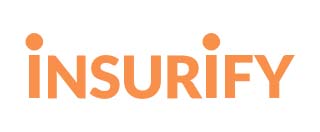Jacob Wong
National Beat Reporter
UCSB received a dubious distinction last week when it ranked #1 in Insurify’s rankings of The 20 most dangerous universities in the US. Insurify, an online insurance comparison site, based rankings on data collected from the FBI’s Uniform Crime Report (UCR) program in 2016.
Insurify described the methodology behind its ranking in the article, stating that it pulled Uniform Crime Reporting (UCR) data from schools with an enrollment of 10,000 students or higher and ranked the 20 schools with the highest proportion of violent crime incidents per 10,000 students.
Per the UCR website, the FBI considers violent crime to be any instance of murder or nonnegligent manslaughter, rape, robbery, and aggravated assault. UCSB, with an enrollment of 23,497, had a violent crime rate of 20.4 per 10k students, the highest of any other school on the list.
UCSB administration is quick to refute the Insurify rankings. “We feel [this is] a gross mischaracterization of UC Santa Barbara,” wrote UCSB Public Affairs Director Shelly Leachman in an email statement. “The safety of our campus community is our highest priority.”
Leachman particularly found issue with Insurify’s ranking methodology, writing, “Unfortunately, rankings like the one by Insurify, which are overly simplistic and provide no analysis or context, can be highly misleading. For Insurify to utilize the FBI data in this way to assert what it claims to be the ‘Top 20 Most Dangerous Universities’ is irresponsible at best.”
One particular way that Leachman believed the UCR data fell short centered around the fact that reported crimes occurring in I.V. reflect the activity of not just UCSB students, but students from the Santa Barbara Community College as well. She wrote, “In our case, the UC Santa Barbara Police Department has jurisdiction for a significant off-campus population that includes students from two separate campuses, many of whom are not affiliated with the University.”
By relying on generalized crime report data, Leachman and others believe that the Insurify rankings fail to account for the specific environment and circumstances surrounding each campus.
Leachman is not alone in her criticism. Since Insurify first released the rankings on September 24, several other universities that were featured have spoken out against them. Coastal Carolina University, which ranked 15th in the study, released this statement: “First and foremost, we refute the findings in the study you have referenced. In our view, it is highly misleading and does not account for certain key factors such as the location of our campus and the excellent work of our police.”
Insurify did not respond to a request for comment on this article. A disclaimer has since appeared at the top of the article stating that the FBI “discourages against ranking locales based on [its crime report data],” and that the rankings were not meant to be a reflection on the performance of law enforcement or the character of student populations at different campuses.
While the trustworthiness of Insurify’s rankings has been questioned by many, all UC schools, including UCSB, release their own crime reports, accessible to all students. In compliance with the Clery Act, a federal statute that requires universities participating in financial federal aid programs to maintain and disclose campus crime statistics, the UCSB police department publishes an Annual Security Report which is available on its website.
Update: Insurify reached out to TBL after this article was published with the following statement:
“With this study, Insurify’s aim was to cite the most highly reputable and accurate data available from the UCR and highlight the positive campus and public safety initiatives at each school listed. As noted in the article, we did not aim to mischaracterize the students or campus police forces of these schools or confer a value judgment. Updated university statistics from the UCR’s 2017 data release have recently become available, rendering the core data from this study archival more than anything else.”











